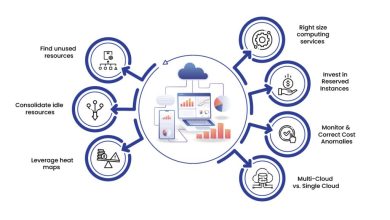
The Role of Common Vulnerabilities and Exposures (CVEs) in Protecting Digital Assets
Key Takeaways
- Understanding CVEs is critical for creating effective cybersecurity defense measures.
- CVE tracking and management aid organizations in proactive threat response and mitigation.
- The cybersecurity community benefits from shared knowledge and resources regarding CVE management.
Introduction to CVEs
Cybersecurity is a multifaceted domain that requires rigorous attention to detail and an unwavering commitment to staying ahead of potential threats. At the forefront of this relentless pursuit is the meticulous cataloging and tracking system of known vulnerabilities and exposures, aptly named Common Vulnerabilities and Exposures (CVEs). These CVEs are a comprehensive repository of standard identifiers for publicly known cybersecurity vulnerabilities. To truly grasp the depth of how CVEs fortify our digital defenses, one must explore the benefits of CVE-compatible products and services, which provide an additional layer of security by aligning with an industry-recognized framework that continuously tracks and addresses vulnerabilities. By consolidating known issues into a universally accessible and regularly updated system, CVEs empower organizations to take preemptive action against cyber threats regardless of size or sector. The strength of such a resource lies not only in its wealth of data but also in its capacity for bolstering communication across the cybersecurity landscape, fostering a unified front in the battle against cyber malfeasance. This standardization is a game-changer for ensuring network and information security in our increasingly interconnected environment.
How CVEs are Identified and Reported
The meticulous process of identifying CVEs begins with vigilant threat monitoring by various organizations and independent security researchers around the globe. A potential vulnerability, upon discovery, is subjected to a thorough evaluation to confirm its legitimacy and potential impact. Once validated, it is cataloged with a unique identifier assigned by the designated CVE Numbering Authority (CNA), which maintains strict guidelines to ensure the integrity of the CVE listing process. The CVEs are then documented in accessible databases, providing a crucial resource for cybersecurity experts, software developers, and IT professionals who constantly refine their security measures in anticipation of or response to these reported vulnerabilities. It’s a continuous race against time as these experts strive to address each vulnerability before malicious actors exploit it. Repositories that house detailed CVE reports are utilized to develop patches and software updates, enhance firewall protections, or implement new security protocols. Across the industry, this shared diligence ensures that CVEs serve as signals, warning of potential dangers and guiding the collective response to protect valuable information and systems.
Coordination Among Organizations to Address CVEs
One of the pillars of effective cybersecurity is the cooperation and collaboration of different entities when sharing knowledge about CVEs. From multinational corporations to newly founded startups, there is a recognition of the importance of uniting forces to counter CVEs effectively. This concerted effort enhances cyber defenses, ensuring a robust collective response to vulnerabilities. The exchange of CVE-related information between entities encourages a sense of mutual protection and cyber resilience, which is vital in a landscape where isolated efforts are insufficient against coordinated cyber threats. This synergy transforms individual and organizational strengths into comprehensive, communal security against enduring and emerging threats. This cooperation is especially critical for maintaining a fortified defense against isolated incidents and large-scale cyber-attacks, which can compromise essential services and undermine public confidence in digital platforms. The alignment of CVE management practices across different organizations demonstrates a commitment to common security goals and strengthens the foundation of trust upon which our digital economy is built.
Best Practices for Monitoring and Responding to CVE Announcements
Regularly monitoring new CVE announcements is a cornerstone of maintaining up-to-date cybersecurity defenses. An array of analytical tools and services cater to continually tracking CVE releases, assisting IT departments and security teams in identifying which vulnerabilities pertain to their networks and assets. Prompt action in applying patches, reconfiguring security settings, or updating software is paramount upon learning a relevant CVE. Internal policies play a critical role in determining the timeline and manner of these responses, underscoring the need for an organization to have well-defined processes in place for vulnerability management. Fostering a culture of security within an organization complements these technological resources. It is incumbent upon staff at all levels to understand the importance of CVE-based alerts and how to react appropriately. Engaging regularly with broader industry initiatives and peer networks further helps organizations stay at the forefront of CVE intelligence, share best practices, and support one another in addressing cybersecurity vulnerabilities promptly and effectively.
The Role of CVEs in Compliance and Standardization
Alignment with CVEs extends beyond practical security considerations into compliance and standardization. Regulators and industry bodies often reference CVEs within their guidelines, making adherence to the CVE framework a boon for organizations seeking to achieve compliance with various cybersecurity norms and mandates. By conforming to a recognized vulnerability management system, businesses strengthen their cybersecurity posture and demonstrate their commitment to industry best practices to partners and regulators. This alignment helps navigate the complex regulatory requirements landscape and assures clients and stakeholders of the organization’s dedication to maintaining a secure operating environment. As businesses become more reliant on digital infrastructures, CVE compliance becomes increasingly critical. It serves as a badge of due diligence, highlighting an organization’s proactive efforts in safeguarding data and protecting itself from the financial and reputational damage associated with security breaches. CVE standardization also facilitates international cooperation by providing a common framework for discussing and addressing security vulnerabilities across borders.
Emerging Trends in CVE and Vulnerability Management
Technological innovation brings the potential for a paradigm shift in how CVEs are managed. Advances in machine learning and artificial intelligence offer the tantalizing prospect of automating much of the vulnerability detection and classification process, thereby increasing the speed and accuracy of CVE reporting. Predictive analytics, too, has the potential to revolutionize this space by anticipating vulnerabilities before they can be exploited, significantly shortening the window of exposure for many digital systems. We expect to see more dynamic and preemptive cybersecurity strategies emerging as the tools and methodologies for managing CVEs become more advanced. Future projections suggest an ever-increasing dependence on technology symbiotic with evolving cyber threat landscapes. Such progress necessitates more robust and agile mechanisms for CVE management. The cybersecurity community continues to innovate, fortifying the digital fortresses that safeguard our most sensitive data and systems. This constant state of evolution is testimony to the indomitable spirit of those who defend against cyber adversaries, ensuring that the defense mechanisms are always one step ahead.
Concluding Thoughts on the Importance of CVE Awareness
The need for comprehensive CVE awareness cannot be overstated for organizations that operate within the digital domain. As the bridge between unnoticed vulnerabilities and reinforced defense lines, CVEs dictate an organization’s security posture against a backdrop of ever-escalating threats. Continued education and heightened vigilance in monitoring and managing CVEs are quintessential practices for those tasked with safeguarding digital information.
Cybersecurity is a shared responsibility beyond individual organizations to encompass their customers, partners, and the wider community. Cultivating a proactive approach to CVE management, coupled with the shared commitment to collaborative defense mechanisms, ensures the security of a single entity and the collective resilience within our digital ecosystem. Embracing this shared effort towards vigilant cybersecurity practices benefits each stakeholder, creating a safer digital space for everyone.




